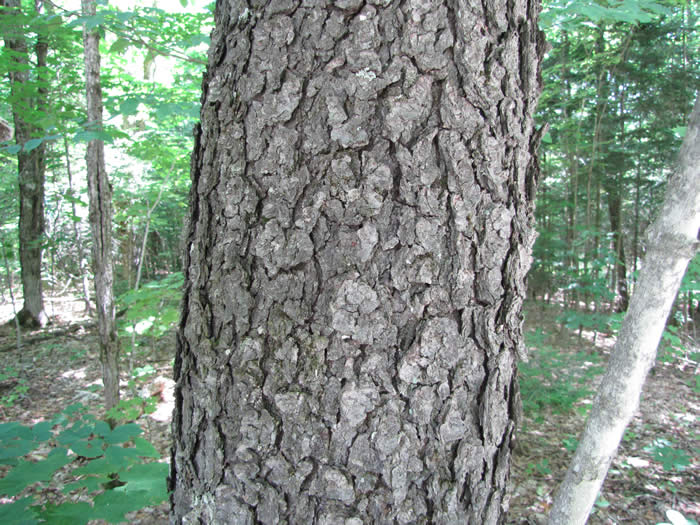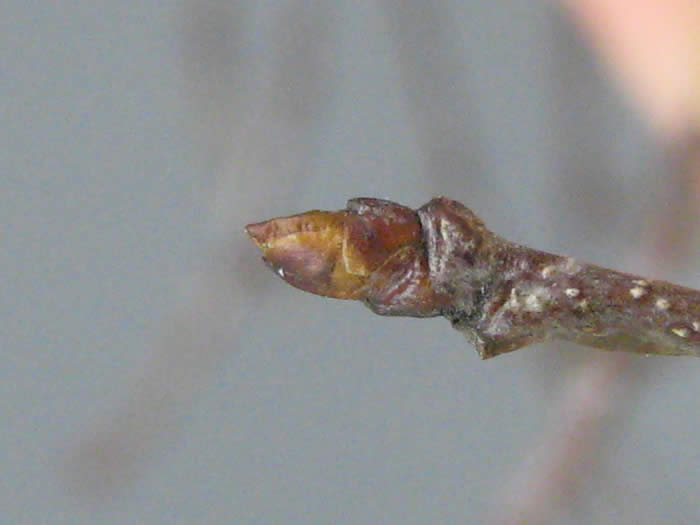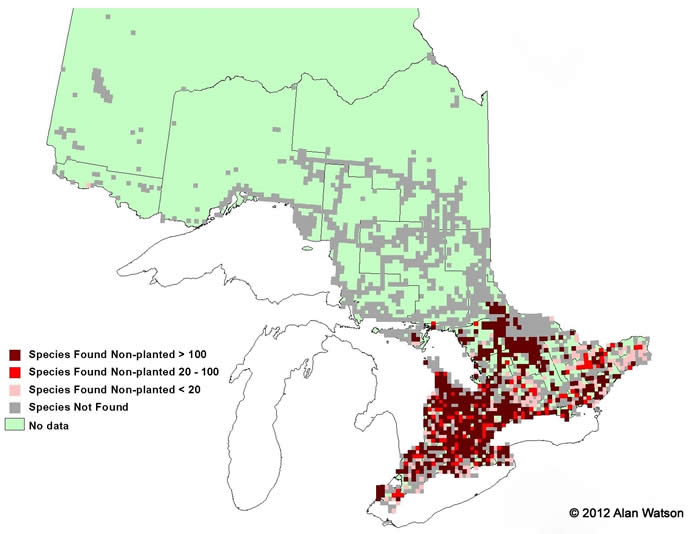Black Cherry - Prunus serotina
The Black Cherry is a native species in North America. The inner bark and leaves were used by early settlers to make tonics, cough syrups and sedatives. The wood was once very popular in making furniture and has thus become scarce. With the exception of the cherry flesh, all other parts of this tree contain hydrocyanic acid and should be avoided as leaves have poisoned cattle and children have even died from chewing on the twigs. The fruits of the Black Cherry are a food source for birds and many mammals.

Each cluster holds 6-12 of these dark red berries. They are astringent but edible, and ripen in late August to early September. Photo by Chris Earley.

The bark of the Black Cherry separates into square shaped scales, with prominent lenticels present. It is known to look like burnt potato chips. Photo by Chris Earley.

The white cupped flowers emerge as the leaves reach full size, usually in mid to late May. Photo by Chris Earley.

The reddish-brown buds of the Black Cherry measure 3-4 mm in length and possess about 10 scales. Photo by Sean Fox.

Ontario Tree Atlas map of non-planted Black Cherry. 1995-1999.
References
Farrar, J.L.. 1995. Trees in Canada. Fitzhenry & Whiteside Ltd. Toronto. ON. 504 pp.
Kershaw, L. 2001. Trees in Ontario: Including tall shrubs. Lone Pine Publishing. Edmonton. AB. 240 pp
Muma, W. 2011. Ontario Trees and Shrubs. [Online] Available: www.ontariotrees.com
OMNR, 2011. Ontario Ministry of Natural Resources: Ontario Tree Atlas. [Online] Available: http://www.mnr.gov.on.ca/en/Business/ClimateChange/2ColumnSubPage/267027.html
OMNR, 2008. Ontario’s Biodiversity: Species at Risk.